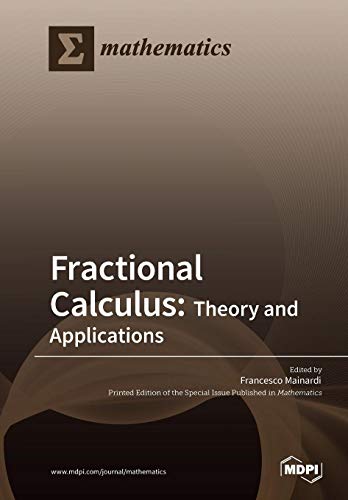
Fractional Calculus: Theory and Applications
by Francesco Mainardi (ed.)
Publisher: MDPI AG 2018
ISBN-13: 9783038972068
Number of pages: 210
Description:
Fractional calculus is allowing integrals and derivatives of any positive order (the term fractional is kept only for historical reasons). It can be considered a branch of mathematical physics that deals with integro-differential equations, where integrals are of convolution type and exhibit mainly singular kernels of power law or logarithm type.
Download or read it online for free here:
Download link
(4.3MB, PDF)
Similar books
 A Mathematics Primer for Physics Graduate Students
A Mathematics Primer for Physics Graduate Studentsby Andrew E. Blechman
The author summarizes most of the more advanced mathematical trickery seen in electrodynamics and quantum mechanics in simple and friendly terms with examples. Mathematical tools such as tensors or differential forms are covered in this text.
(24571 views)
 Intermediate Maths for Chemists
Intermediate Maths for Chemistsby J. E. Parker - Bookboon
This volume is the second of a three part series of texts taken during a first-year university course. Tutorial questions with fully worked solutions structured on a weekly basis to help the students to self-pace themselves are used.
(9979 views)
 A Short Course on Approximation Theory
A Short Course on Approximation Theoryby N. L. Carothers - Bowling Green State University
The text is intended as a survey of elementary techniques in Approximation Theory for novices and non-experts. It is sufficient background to facilitate reading more advanced books on the subject. Prerequisites include a course in advanced calculus.
(12082 views)
 Derivations of Applied Mathematics
Derivations of Applied Mathematicsby Thaddeus H. Black - Debian Project
The book deals with applied mathematical proofs. It emphasizes underlying mathematical motivation, without full mathematical rigor. Mathematical results are derived from applied perspective of the engineer and the scientist.
(23731 views)